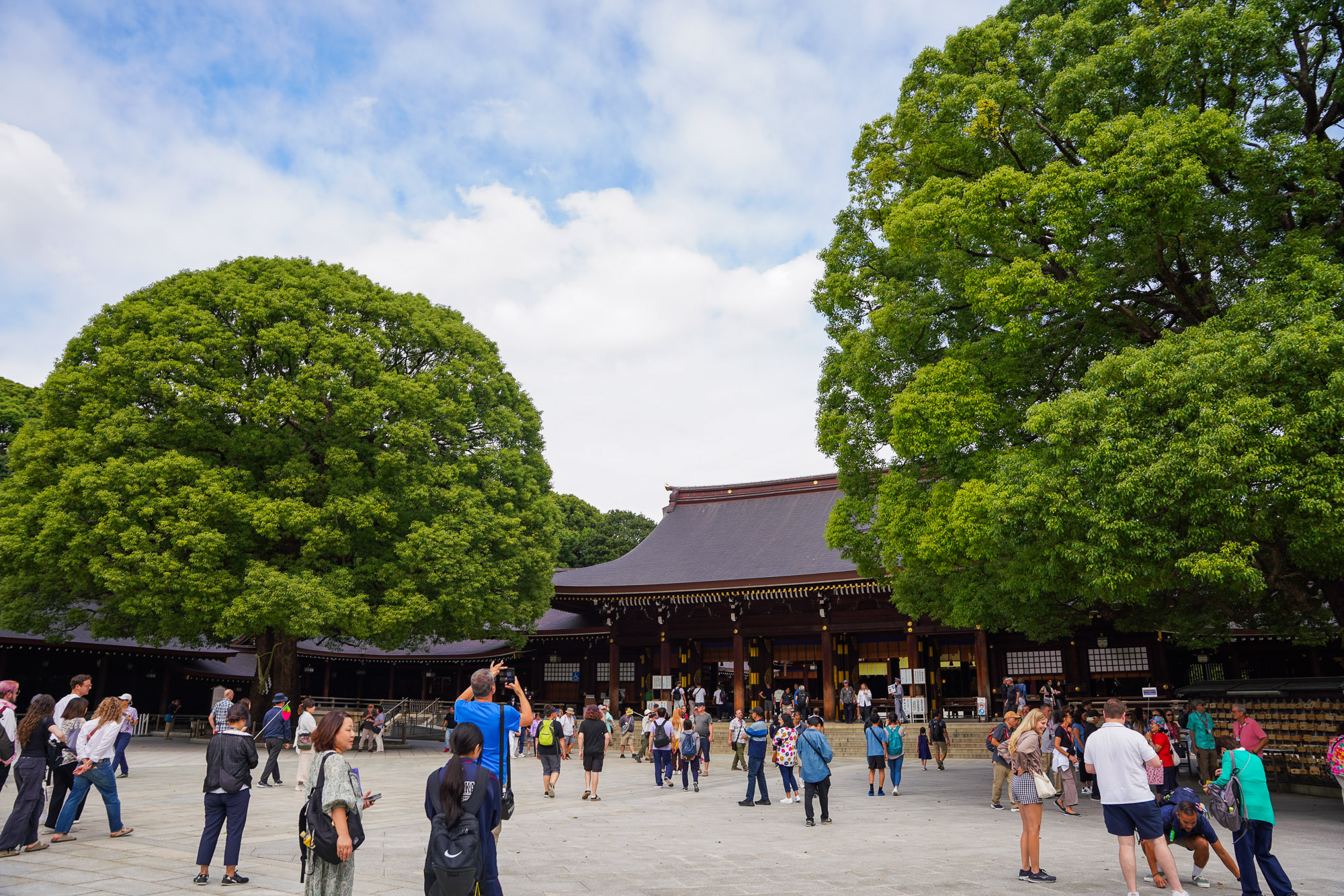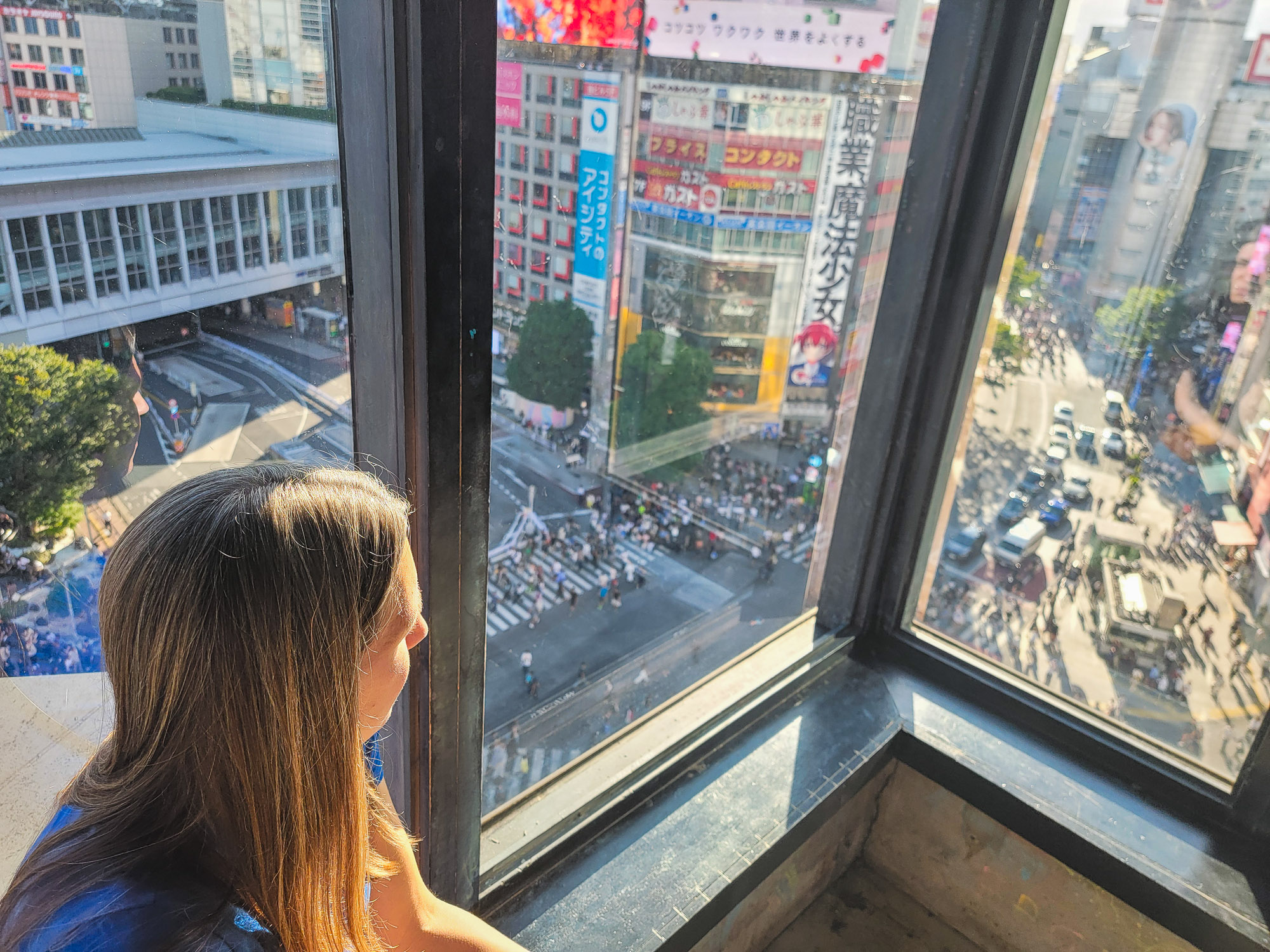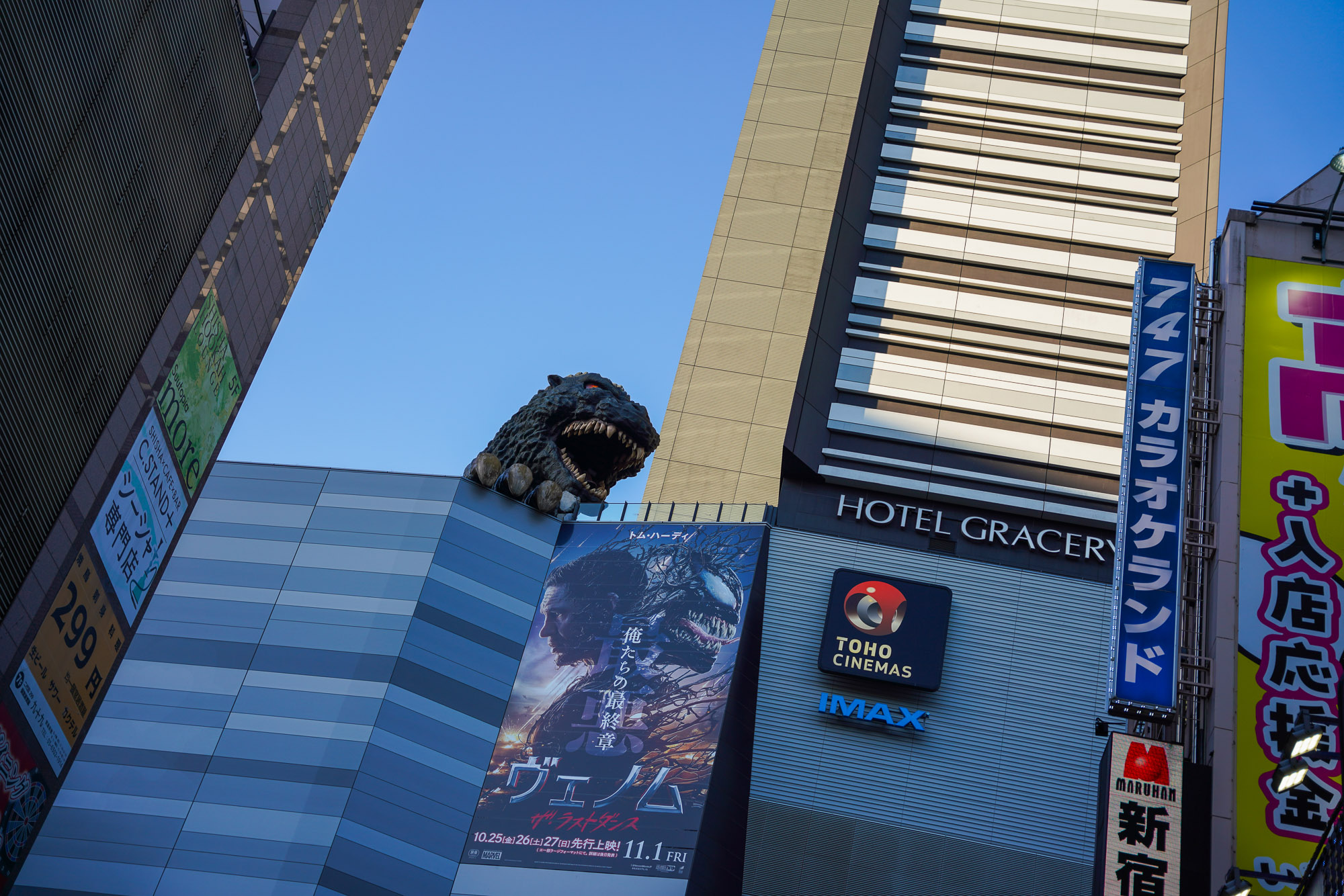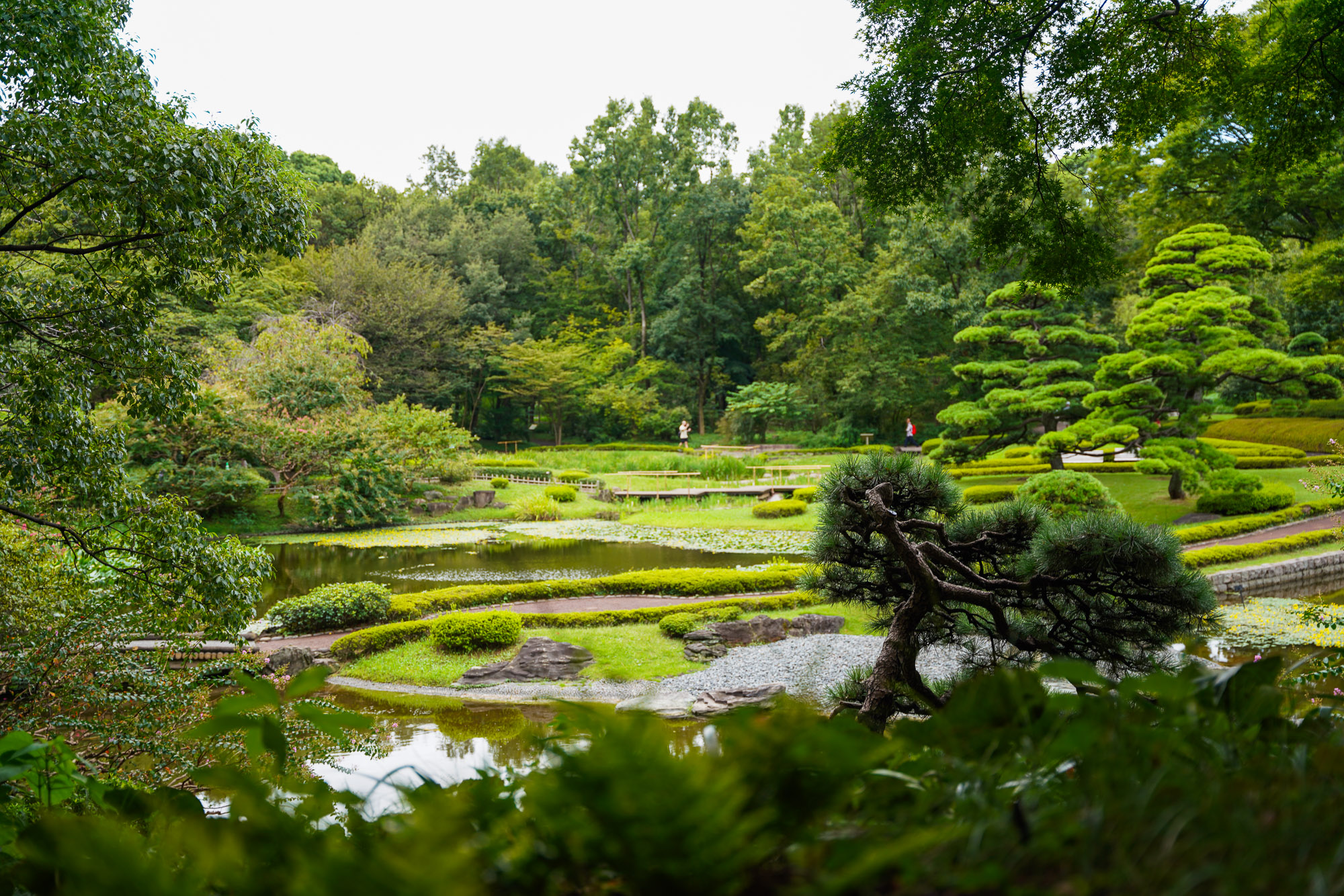Published by Jeremy. Last Updated on August 19, 2025.
Disclaimers: Our site uses demographic data, email opt-ins, display advertising, and affiliate links. Please check out our Terms and Conditions for more information. Listed prices and attraction details may have changed since our visit and initial publication.
When planning a trip to Japan, odds are good you’re going to spend a fair bit of time in Tokyo.
As many consider Tokyo to be the largest city in the world by population (when including the metro area), it shouldn’t be a surprise that there is really a lot to do here. There is so much to see, in fact, that we could visit many times over and still not feel like we’re doing the city justice.
Naturally, with the population comes the urban sprawl, and Tokyo is simply massive from an area standpoint. As such, when it comes to planning where to stay in Tokyo, you really have a lot to consider as the options are nearly endless.
But one thing is certain- no matter what, staying near a subway station is a great idea. But even there, a few subway locations are better than others when it comes to getting around this massive city and is our guiding consideration when booking a hotel or apartment rental.
Tokyo is Huge, But the Subway is Great

While subway stops are plentiful in Tokyo, such that you’re never really that far from a stop on foot, it is safe to say that it can take quite a bit of time to get around if you plan to hit all the tourist highlights.
Some areas are close together, like Shinjuku to Shibuya on the western side of Tokyo, which takes just about 6 minutes on the Yamanote Line. Others are quite a bit further apart, like Shinjuku to Asakusa, which can take upwards of 45 minutes on the Shinjuku and Asakusa Lines with a single transfer. These, of course, also exclude walking times to/from each station, which can be anywhere from mere moments to 10-20 minutes or more on each end.
Generally speaking, you’re looking at around 10 to 60 minutes to get between any two major attractions in Tokyo via subway, and many will require one or more transfers. So, how do you plan around where to stay to get the most out of your experience? You have to be strategic with the metro, of course!
When thinking of the subway stations in Tokyo, it can get really confusing looking at all of the lines and operators. There are simply far too many to keep them all straight. But to us, the biggest ones to keep in mind are the Yamanote Line, which runs in a big loop around Tokyo, and then other lines that cut across the center, like the JR Chuo Line (rapid) and Sobu Line (local), as these connect most of the major highlights that first, second, and even third time visitors would likely want to see.
If you were to take the Yamanote Line from Shinjuku to Akihabara, which are on opposite sides of the loop, it may take over 30 minutes. But you can knock off 10 minutes by crossing the center of Tokyo with the Chuo Line. The same is true if you are heading to Tokyo Station from Shinjuku on a rapid train- often taking just 13 minutes instead of 30+!
As such, being strategic with where you book accommodation relative to these lines can make for an easier time navigating around the city proper. We found ourselves riding these two lines more than others, and it really helped us drill down where to stay from there.
East or West Doesn’t Matter as Much – The Connection Does
Now, you may read the above and go, “well, I should stay in Shinjuku or Tokyo Station as it’ll put me in a great position to cross Tokyo on these lines”. This is, of course, absolutely true (and we really love both areas, so we can’t really argue against either).
But the honest answer is that you do not necessarily have to be that close to these primary stations to make things easier when getting around.
As such, we’d take a slightly more flexible approach and suggest that coordinating your stay near a stop along the Yamanote Line that is within one or two stops away from those that cut across the city can make for a good trade-off in all things navigation.
This opens up many, many neighborhoods to consider, and from there, it is all about your preference for what kind of amenities you want in the area for quicker access.
Personally, we stayed near the Shin-Okubu Station stop on the Yamanote Line, just north of Shinjuku, and found that we could get around just fine- even if it took a few minutes longer when needing to transfer off of the Yamanote Line. We were still within walking distance of the highlights and restaurants of Shinjuku, which was great for dinners at the end of the day, and we were just a few stops away from Shibuya, Harajuku, the Meiji Temple, and more on the west side of the city, where we ultimately spent a lot of time during our most recent visit.
For those who like the higher-end side of Tokyo, staying on the eastern side of the city, near Tokyo Station, also puts you in closer proximity to the Imperial Palace, Ginza, Akihabara, and quicker rides to more historic areas like Asakusa and the Tsukiji Market outside of the main metro loop. The latter two definitely took us the longest travel times to reach from the opposite side of Tokyo, and that is primarily because they’re not on the convenient routes mentioned above!
- Note: I stayed in Asakusa on my first visit to Tokyo, and it was just a bit more burdensome getting around than I’d prefer. Getting there once to see the attractions is easy, albeit time-consuming, but having to take those extra steps every day, or even multiple times per day, adds up.
From there, we cannot make personal recommendations around the individual neighborhoods and, in all honesty, suspect you can find many gems when deciding where to stay in Tokyo, be it for price, dining scene, nightlife, and more. Just keep in mind that the metro in Tokyo does not run all night (often ceasing operation at midnight, if not earlier depending on the line), and if you are interested in nightlife in particular, staying near a popular area may help keep taxi costs in check, too.
The metro does not wait for anyone, and we witnessed several mad dashes to catch the last trains at the end of the day!
So if you are eyeing accommodation within a quick walk to a subway station (under ten minutes walking is ideal), that is near some of the areas in Tokyo mentioned in this article, and allows you somewhat easy access to the train lines that both cut across and loop the city quickly, you’re going to be in a good position for your stay.
Travel times add up fast in Tokyo, and this strategy really helped us spend less time on the subway and more time enjoying the city!
Do you have a favorite neighborhood to stay in Tokyo? Comment to share!
Book your stay in Japan today. Click here to book a hotel and click here to book an apartment rental.
About Jeremy

About the Author: Jeremy is a full-time travel writer based in Pittsburgh and primary author of this site. He has been to 70+ countries on five continents and seeks out new food, adventure activities, and off-the-beaten-path experiences wherever he travels.


